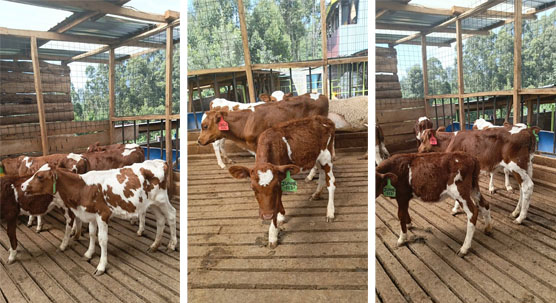I’d love to share how veterinary ultrasound specialists working across all species bring precision and insight into practical animal care. Chatting with friends overseas, farmers and vets often mention how ultrasound—or as I’ll call it here, “sonography”—makes a real difference in monitoring health, development, and treatment, whether it’s on a dairy farm in the Netherlands or a wildlife rescue in Australia.

Why sonography matters for every animal
On farms, in zoos or private clinics, ultrasound is a game-changer. For instance, I talked with a cattle vet in New Zealand who emphasized how non-invasive imaging helps detect early pregnancy, fluid buildup, or musculoskeletal issues before outward signs emerge. That same principle applies whether the animal is a horse, dog, llama, or parrot—clarity without stress.
Comparing approaches across species
| Species | Common Uses of Sonography | Benefit Highlight |
|---|---|---|
| Cattle (beef/dairy) | Muscle growth, fat deposition, الحمل, الأعضاء الداخلية | Better feeding/silage planning, welfare |
| Equines (خيول) | Tendon health, abdominal organs, الحمل | Real-time tendon monitoring, early alerts |
| Companion animals | Heart, الرئتين, abdominal organs | Stress-free, in-clinic diagnostics |
| Exotics (reptiles, birds) | Organ structure, egg status, mass detection | Critical for species where palpation fails |
Farmers I know in the US and Europe mention how sonography helped them adjust feeding or sprinkler regimes based on fluid volumes detected in livestock. Meanwhile, zoo vets in Singapore and South Africa rely on it to check organ function in endangered species—without full anesthesia every time.
Practical impressions from international vets
A vet based in the UK told me they use sonography to guide joint injections in dogs and horses—so precise, the needle goes exactly where it should, avoiding guesswork. In Canada, a wildlife team used it during rescue of a baby seal: images confirmed dehydration, guiding appropriate fluid therapy before rehab release.
Veterinary colleagues chatting on forums often write things like:
“Sonography saved my patient’s life—found a hidden abscess before it ruptured.”
“Seeing the calf’s heart beating for the first time was downright magical.”
That mix of emotional connection and technical clarity seems universal.
Integrating sonography with decision-making
For livestock producers, tracking fetal development or muscle growth delivers real data—no guesswork. When breeding dairy goats, ultrasound helps determine how many fetuses are present, how healthy they look, and whether any intervention looks needed. That changes feeding strategies or shelter preparations.
In equine care, checking tendon or ligament healing with sonography lets you decide when the horse can return to light work or full training. For small pets, scanning abdominal organs can identify early kidney disease or tumors while keeping pets calm in the exam room.

Enhancing animal welfare, efficiency, economics
Using ultrasound routinely supports better welfare: no sedation needed for many scans, quick images, less handling stress. Owners appreciate how clearly you can explain what’s happening—“I’m pointing here so you see the fluid pocket” becomes a shared moment.
Economically, livestock farmers use sonography to decide when cattle are reaching optimal muscling or starting to lay down fat, tailoring feed accordingly—saving costs and improving meat quality. Horse owners avoid re-injury by tracking healing hotspots. Exotic animal caregivers prevent fatal issues early on.
What makes someone a veterinary ultrasound specialist?
It’s not just owning a machine. Vets or techs need training to interpret brightness-mode images, know anatomical landmarks across species, and choose the right probe frequency. Specialists often cross-train: one week scanning dairy herds, the next helping with small mammal chest exams.
They also share experiences globally. I’ve seen webinars where specialists discuss scanning techniques for wombs in camels one day and tendon tears in dogs the next. That diversity sharpens skills and encourages innovative imaging strategies—like using portable units outdoors during fieldwork.
Real-world result stories
A friend’s dairy farm in Germany used sonography to identify underdeveloped uterus tissue in a cow that had calved late. That saved weeks by shifting her to a different management group. In Costa Rica, wildlife vets rescued an injured sloth—sonography revealed an internal injury invisible externally, prompting surgery that saved its arm.
Summary table of benefits
| Benefit Type | Description |
|---|---|
| Non-invasive safety | No sedatives in most cases, minimal handling reduces stress |
| Diagnostic clarity | Real-time imaging of muscles, organs, fetuses, lesions |
| Efficient decisions | Feed, treatment, rehabilitation, breeding plans guided by objective data |
| Cross-species reach | Same tool works across cattle, خيول, dogs, birds, exotics |
| Shared learning | Specialist communities improve outcomes through shared case experiences |
Ultrasound specialists operating across species don’t just have a tool—they offer insight, timing, and reassurance. Conversations with peers overseas confirm what I see: smart, gentle, visible care builds trust and better outcomes, whether for a steer on a ranch or a macaw in a sanctuary.